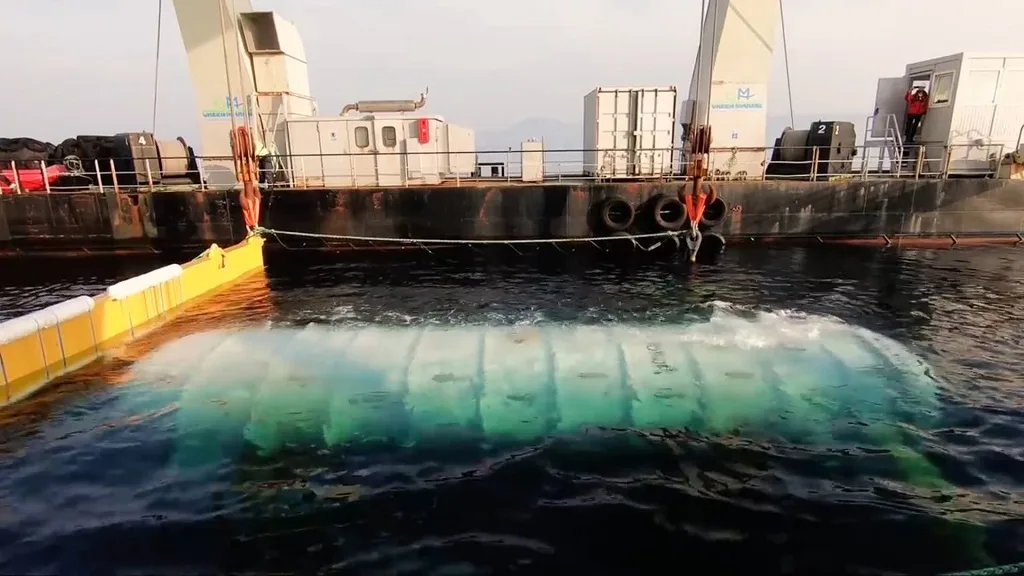
Exploring the Future of Underwater Data Centers
In recent years, the concept of underwater data centers has gained significant attention in the technology sector. This innovative approach promises to revolutionize data storage and management by leveraging the natural cooling properties of the ocean. This article explores the emergence of underwater data centers, their benefits, effectiveness, challenges, solutions, and future prospects.
What is Underwater Data Center Technology and When Did it Appear?
Underwater data center technology involves submerging data storage facilities in the ocean to utilize the natural cooling properties of seawater. The concept first emerged in the early 2010s, with significant advancements occurring in the subsequent years. The primary goal is to enhance energy efficiency and reduce the carbon footprint associated with traditional land-based data centers.
The first notable implementation of this technology was by Microsoft, with its Project Natick, which deployed an underwater data center off the coast of Scotland in 2015. The success of this project demonstrated the viability of underwater data centers and spurred further research and development in this field. By 2020, underwater data centers had evolved from experimental projects to practical solutions being considered by major tech companies worldwide.
Why Immerse Data Centers Underwater?
The primary motivation behind immersing data centers underwater is to harness the natural cooling capabilities of the ocean. Traditional data centers consume vast amounts of energy to maintain optimal operating temperatures for servers. By submerging these facilities, companies can significantly reduce their reliance on artificial cooling systems, thereby cutting energy consumption and operational costs.
Moreover, underwater data centers can be strategically located near coastal cities, reducing latency and improving data transmission speeds for end-users in densely populated areas. This proximity to urban centers can enhance the overall performance of cloud services and other data-dependent applications. Additionally, underwater data centers contribute to environmental sustainability by utilizing renewable energy sources such as tidal and wave power.
Is it Just as Effective?
Underwater data centers have proven to be just as effective, if not more so, than their land-based counterparts. The consistent and stable temperature of the ocean provides a natural cooling mechanism that is both reliable and efficient. This eliminates the need for complex and energy-intensive cooling infrastructure, leading to significant energy savings.
Moreover, the underwater environment is free from many of the environmental factors that can affect land-based data centers, such as dust, temperature fluctuations, and human interference. This isolation helps to maintain the integrity and performance of the servers, resulting in higher reliability and uptime.
Furthermore, the deployment of underwater data centers has shown promising results in terms of maintenance and operational efficiency. The enclosed and controlled underwater environment reduces the frequency of hardware failures, which in turn lowers the need for maintenance and extends the lifespan of the equipment.
Are There Any Problems with This Solution?
Despite the many advantages, there are several challenges associated with underwater data centers. One of the primary concerns is the logistics of deployment and retrieval. Installing data centers on the ocean floor requires specialized vessels and equipment, which can be costly and complex.
Another issue is the potential environmental impact. While the technology aims to leverage the natural cooling properties of the ocean, it is essential to ensure that these installations do not disrupt marine ecosystems. Careful planning and environmental assessments are crucial to mitigate any adverse effects on marine life.
Additionally, underwater data centers must be designed to withstand the harsh ocean environment, including pressure, corrosion, and potential damage from marine activities. These factors necessitate robust and durable designs, which can increase the overall cost and complexity of the projects.
Security is also a significant concern. While the physical isolation of underwater data centers can protect them from many traditional threats, it also poses unique security challenges. Ensuring the security and integrity of data in such remote locations requires advanced security measures and continuous monitoring.

How to Deal with the Disadvantages of This Idea?
Addressing the logistical challenges involves developing more efficient deployment and retrieval methods. Advances in marine engineering and robotics can play a crucial role in simplifying these processes and reducing associated costs. Collaboration with marine technology experts is essential to streamline operations.
To minimize environmental impact, comprehensive environmental impact assessments should be conducted before deployment. Implementing eco-friendly designs and adhering to strict environmental regulations can help protect marine ecosystems. Continuous monitoring and adaptive management strategies are vital to ensure minimal disruption to the environment.
Enhancing the durability and robustness of underwater data centers is critical for their success. Utilizing corrosion-resistant materials, reinforced structures, and redundant systems can improve the resilience of these installations. Regular maintenance and inspection routines are necessary to address any potential issues promptly.
Temporary Hype or Promising Future?
While the concept of underwater data centers may seem like a temporary hype, the underlying benefits suggest a promising future. The significant energy savings and environmental benefits make this technology an attractive alternative to traditional data centers. As the technology matures and deployment methods become more efficient, the adoption of underwater data centers is likely to increase.
Furthermore, the growing demand for data storage and processing capabilities necessitates innovative solutions. Underwater data centers offer a viable option to meet this demand while addressing the environmental concerns associated with traditional data centers. The integration of renewable energy sources further enhances the sustainability of this approach.
In conclusion, underwater data centers represent a forward-thinking solution with the potential to transform the data storage industry. Continued research, development, and collaboration will be crucial to overcoming the challenges and realizing the full potential of this innovative technology.